Protecting your outdoor space from damage caused by local and stray cats can be challenging. Cats can dig up gardens, leave unpleasant messes, and mark territory with offensive odors. This guide reviews the best cat repellent solutions available in 2025, categorized by type to help you choose the right option for your specific needs.
Quick Picks: Best Cat Repellents
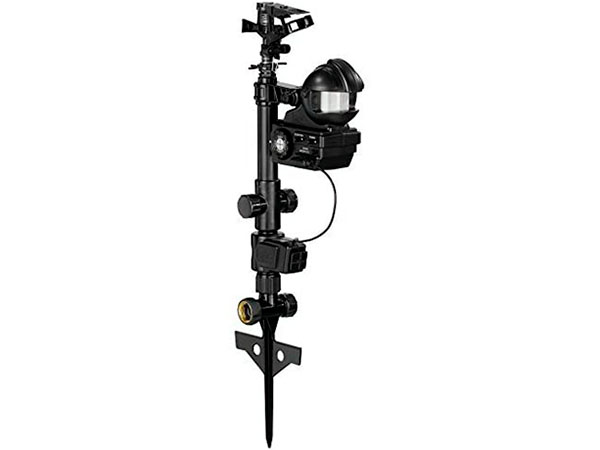
Best Overall

Best Electronic

Best Chemical-Free
- Understanding Cat Deterrents and Repellents
- Best Motion-Activated Sprinkler Repellents
- Best Ultrasonic Cat Repellents
- Best Granular and Spray Repellents
- Best Indoor Cat Deterrents
- Best Cat Repellents – Natural and DIY Solutions
- Comprehensive Cat Control Strategy
- Frequently Asked Questions
- Conclusion
Understanding Cat Deterrents and Repellents
Stray and neighboring cats can cause significant damage to your outdoor spaces. They may leave offensive scent markings, prey upon birds and wildlife, dig up gardens, and use your lawn as a litter box. Fortunately, there are humane and effective ways to deter cats without causing them harm.
Types of Cat Repellents
The best cat repellents come in various forms, each with specific advantages. Motion-activated sprinklers use water and surprise, ultrasonic devices emit sounds cats dislike, while granular and spray repellents use scents and tastes that cats avoid.
How Cats Are Deterred
Effective deterrents work by targeting cats’ sensitive senses. Cats have smell receptors 14 times stronger than humans, excellent hearing for high frequencies, and are naturally cautious of sudden movements or water.
Creating an Effective Strategy
The most successful approach often combines multiple repellent types. This creates a multi-sensory barrier that makes your property much less appealing to feline visitors.
Best Motion-Activated Sprinkler Repellents
Motion-activated sprinklers are among the best cat repellents because they combine several elements cats dislike: sudden movement, noise, and water. These devices detect the cat’s presence and release a quick burst of water, startling the animal without causing harm.
Orbit Yard Enforcer Motion-Activated Sprinkler
Best OverallHow Does It Work
How to Use
- Position the sprinkler in the direction where cats typically enter your yard
- Adjust the sensitivity of the motion sensor as needed
- Set the duration of the spray to your preference
- For best results, occasionally move the sprinkler to new locations
- Features both day and night detection modes
- Protects up to 1,600 square feet of yard space
- Adjustable spray duration and sensor sensitivity
- Uses only water - no chemicals or harmful deterrents
- Eco-friendly solution that conditions cats to avoid your property
- Requires a water connection and batteries
- May need seasonal adjustments in colder climates
- Initial setup might take some experimentation
Tips for Using Motion-Activated Sprinklers Effectively
- Strategic Placement: Position sprinklers where cats typically enter your yard or in areas they frequently visit
- Rotation Schedule: Periodically move sprinklers to prevent cats from learning to avoid specific areas
- Water Pressure: Ensure adequate water pressure for optimal spray distance and effectiveness
- Seasonal Adjustments: In colder months, take precautions to prevent water freezing in the device
- Battery Maintenance: Check batteries regularly to ensure continuous operation
Best Ultrasonic Cat Repellents
Ultrasonic devices emit high-frequency sounds that are unpleasant to cats but generally inaudible to humans. These devices are ideal for areas where water-based solutions aren’t practical or for homeowners who prefer a more discreet deterrent method.
Solar Powered Ultrasonic Motion-Sensor Repeller
Best ElectronicHow Does It Work
How to Use
- Simply place the deterrent in any outdoor space you want to protect
- No complex setup required - the solar panel charges the unit during daylight
- Covers up to 26 feet in a 110° angle
- Works automatically once installed
- Solar-powered - no batteries or electricity needed
- Completely silent to most humans
- No water connection required
- Environmentally friendly solution
- Includes flashing lights for additional deterrent effect
- May be less effective on some particularly determined cats
- Requires sufficient sunlight to maintain charge
- Coverage area is smaller than some other options
Maximizing Ultrasonic Repeller Effectiveness
Ultrasonic devices can be highly effective when used properly, but there are several factors that can impact their performance:
- Clear Path: Ensure there are no large objects blocking the device’s signal path
- Proper Height: Position devices at the same height as an approaching cat (about 1-2 feet off the ground)
- Weather Protection: While most are weather-resistant, providing some shelter can extend their lifespan
- Multiple Units: For larger areas, use multiple devices to create overlapping coverage
- Regular Testing: Periodically test devices to ensure they’re functioning properly
Best Granular and Spray Repellents
Chemical repellents use scents and tastes that cats find unpleasant to create barriers around your property. These products are ideal for targeting specific areas like flowerbeds, garden perimeters, or other spots cats frequently visit.
Safer Critter Ridder Animal Repellent Granules
Best GranularHow Does It Work
How to Use
- Sprinkle around the perimeter of areas you want to protect
- Create a barrier along tree lines, flowerbeds, or garden beds
- Apply to pathways where cats typically travel through your yard
- Reapply approximately every 30 days or after heavy rain
- Covers up to 300 square feet per application
- Made with organic ingredients
- Lasts up to 30 days per application
- Can be used for spot treatments in problem areas
- Works on multiple sensory levels - smell, taste, and touch
- Requires regular reapplication
- Less effective after heavy rain
- May need more frequent application in high-traffic areas
Safer Critter Ridder Animal Repellent Spray
Best SprayHow Does It Work
How to Use
- Spray directly onto garden beds, trees, flowerbeds, and shrubs
- Apply to areas where cats frequently visit or mark territory
- Can be used on garbage containers to prevent cats from rummaging
- Reapply approximately every 30 days or after heavy rain
- Covers up to 320 square feet per application
- Made with organic ingredients
- Formula delivers nutrients to plants while deterring cats
- Lasts up to 30 days per application
- Ready-to-use formula requires no mixing
- Requires regular reapplication
- Less effective in rainy conditions
- May need more frequent application in areas with high cat activity
Creating Effective Repellent Barriers
For maximum effectiveness with granular and spray repellents:
- Layer Your Defense: Use granules for perimeter protection and sprays for specific surfaces like fence tops or tree trunks
- Consistent Application: Maintain a regular schedule for reapplying repellents
- Weather Considerations: Apply after rain has passed and during dry weather when possible
- Barrier Width: Create granular barriers at least 12-16 inches wide around protected areas
- Focus on Entry Points: Pay special attention to areas where cats typically enter your property
Best Indoor Cat Deterrents
Indoor cat deterrents help keep both your own cats and visiting felines away from specific areas within your home. These solutions are designed to protect furniture, counter tops, and other areas without causing harm.
PetSafe SSSCAT Spray Indoor Pet Deterrent
Best IndoorHow Does It Work
How to Use
- Place the device near areas you want to protect
- Position it so the sensor faces the direction from which cats typically approach
- The device protects areas within a 3-foot radius
- For best results, move the device occasionally to prevent cats from learning to approach from different angles
- Completely safe for cats and other pets
- No odor or residue left behind
- Operates automatically - no need for manual triggering
- Can be used with multiple units to protect larger areas
- Highly effective training tool
- Limited range (3 feet)
- Requires replacement cans after use
- Battery powered - requires battery changes
Indoor Deterrent Strategies
In addition to automated spray deterrents, consider these indoor cat-deterrent strategies:
- Double-Sided Tape: Cats dislike sticky surfaces – apply to furniture edges or other areas cats frequently scratch
- Aluminum Foil: The noise and texture of foil deters many cats from jumping on surfaces
- Citrus Scents: Place citrus peels or use citrus-scented sprays in problem areas
- Designated Alternatives: Provide acceptable alternatives (scratching posts, climbing trees) near areas you want to protect
- Scat Mats: Textured mats with soft plastic points create an uncomfortable (but harmless) surface cats avoid
Best Cat Repellents – Natural and DIY Solutions
Commercial repellents are effective, but many homeowners prefer natural solutions using ingredients they already have at home. These DIY approaches can be equally effective when prepared and applied correctly, often at a fraction of the cost. Some popular natural ingredients include essential oils like peppermint and eucalyptus, which have been shown to deter bats when used in sprays or diffusers. Additionally, creating a homemade mixture of vinegar and water can help create an unpleasant environment for these pesky pests. For those seeking the best bat repellent methods, combining these DIY solutions with proper home maintenance, such as sealing entry points, can significantly enhance their effectiveness in keeping bats at bay.
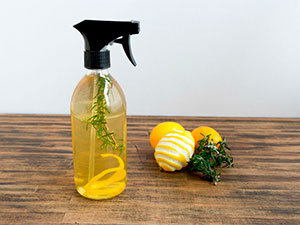
Citrus Peel Repellent
- Uses discarded peels from oranges, lemons, and grapefruits
- Place fresh peels in garden beds or problem areas
- Replace every 3-4 days as scent fades
- Can also create citrus oil spray for longer-lasting effect
Cats have a natural aversion to citrus oils due to compounds that are mildly toxic to their digestive systems. Their sensitive noses detect these compounds even in small amounts, making citrus an excellent natural deterrent.

Vinegar and Pepper Solution
- Mix 1 cup white vinegar, 1 cup liquid soap, 1 cup water
- Add 1 tsp of crushed cayenne pepper (optional)
- Spray around perimeters and problem areas
- Reapply after rain or every 3-5 days
The strong scent of vinegar repels cats, while the soap helps the solution adhere to surfaces. Adding cayenne pepper creates an additional deterrent that cats detect through both smell and minor irritation if they touch treated areas.

Essential Oil Mixtures
- 20 drops eucalyptus oil + 20 drops lemon oil + 1 quart water
- Alternative: use lavender, peppermint, or citronella oils
- Apply to cotton balls placed in strategic locations
- Refresh every 2-3 days as scent diminishes
Essential oils provide concentrated scents that cats find overwhelming. This solution creates an invisible barrier that most cats will avoid. Use in spray form for larger areas or on cotton balls for targeted protection.
Cat-Repelling Plants: Natural Living Barriers

Coleus Canina (Scaredy Plant) – Releases a skunk-like odor when brushed against

Lavender – Strong floral scent repels most cats
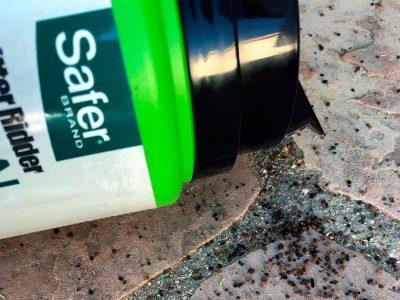
Rosemary – Strong fragrance cats avoid, plus useful for cooking
DIY Deterrent Recipe: Citrus Peel Spray
- Collect peels from 3-4 citrus fruits (orange, lemon, grapefruit)
- Boil peels in 2 cups of water for 10-15 minutes
- Let the mixture cool and steep overnight
- Strain liquid into a spray bottle
- Add 1 teaspoon of liquid soap to help mixture adhere to surfaces
- Spray around garden beds, fence posts, and other areas cats frequent
Comprehensive Cat Control Strategy
The most successful approach to cat control combines multiple deterrent methods to create a multi-sensory barrier. This comprehensive strategy addresses different cat behaviors and creates a property that’s consistently uninviting to feline visitors.
| Strategy Element | How It Works | Implementation Tips |
|---|---|---|
| 1. Remove Attractants | Eliminates reasons for cats to visit your property |
|
| 2. Create Physical Barriers | Physically prevents access to protected areas |
|
| 3. Deploy Electronic Deterrents | Creates unexpected stimuli cats find unpleasant |
|
| 4. Apply Repellent Products | Creates scent and taste barriers |
|
| 5. Address Cat Odor Problems | Eliminates scent markers that attract other cats |
|
Implementation Timeline
Begin with attractant removal and physical barriers, then add electronic deterrents, followed by repellent applications. This gradual approach allows you to identify which methods work best for your particular cat problem.
Rotation Strategy
Cats can become accustomed to deterrents over time. Periodically rotating or changing the types of repellents you use helps prevent this adaptation and maintains effectiveness.
Monitoring Effectiveness
Look for paw prints, droppings, or disturbed soil to identify if cats are still visiting. These signs help you determine which areas need additional or different deterrent methods.
Addressing Persistent Cat Problems
Identifying Cat Activity in Your Yard
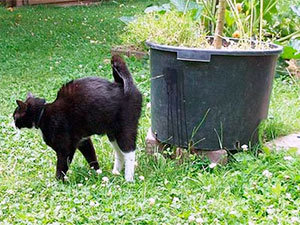
Cat waste in garden beds is a common sign of feline visitors
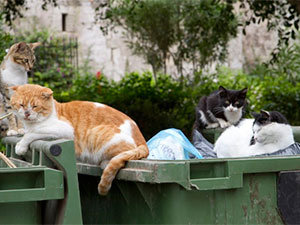
Look for paw prints in soft soil or mulch

Disturbed plants and digging indicate cat activity
Frequently Asked Questions
What scents are most effective at repelling cats?
Cats have a highly sensitive sense of smell, and several scents can effectively repel them:
- Citrus oils (lemon, orange, grapefruit)
- Essential oils like peppermint, eucalyptus, and lavender
- Vinegar (particularly apple cider vinegar)
- Black pepper, cayenne pepper, and cinnamon
- Rosemary and rue
For best results, apply these scents at entry points and problem areas, refreshing them every few days as the scent fades. Using multiple scents in rotation can prevent cats from becoming accustomed to any single deterrent.
Are mothballs effective and safe as cat repellents?
While mothballs do repel cats, they are highly toxic to cats, children, wildlife, and even humans when used outdoors. The chemicals in mothballs (naphthalene or paradichlorobenzene) can cause serious health issues including:
- Respiratory irritation
- Liver and kidney damage
- Hemolytic anemia (in cats)
- Neurological damage
- Environmental contamination
Safer alternatives like citrus oils, vinegar solutions, and commercial repellents provide effective deterrence without the health and environmental risks associated with mothballs.
How often should I reapply granular and spray repellents?
Most commercial granular and spray repellents require reapplication every 30 days under ideal conditions. However, you should reapply more frequently in these situations:
- After heavy rainfall or irrigation
- In areas with persistent cat activity
- During periods of high humidity
- When you notice the scent fading
- In high-traffic areas like garden entrances
For maximum effectiveness, establish a regular maintenance schedule and monitor protected areas for signs of diminishing repellent performance, such as renewed cat activity or fading odor.
Do electronic and ultrasonic repellents harm cats?
Quality electronic and ultrasonic repellents are designed to deter cats without causing harm. These devices work by:
- Creating startling but harmless stimuli (water spray, noise)
- Emitting ultrasonic frequencies that cats find uncomfortable but not painful
- Triggering the cat’s natural avoidance response
- Teaching cats to associate certain areas with unpleasant experiences
When used properly, these devices condition cats to avoid protected areas without causing physical harm or lasting distress. They’re considered more humane than chemical deterrents and are recommended by many animal welfare organizations as part of a comprehensive deterrent strategy.
Will cat repellents affect other animals or pets?
Different repellents affect various animals differently:
- Motion-activated sprinklers will deter most animals, including dogs, deer, and raccoons
- Ultrasonic devices often affect dogs and some wildlife, but most are adjustable to target specific species
- Pepper-based repellents can affect most mammals with sensitive noses
- Citrus and essential oil repellents generally have minimal impact on dogs but may deter some insects and smaller mammals
If you have pets that spend time in your yard, test repellents in a small area first and observe your pet’s reaction. Many modern repellents offer species-specific settings that minimize impact on non-target animals.
What should I do about persistent feral cat problems?
For persistent feral cat issues that don’t respond to deterrents, consider these humane approaches:
- Contact local Trap-Neuter-Return (TNR) programs that humanely trap cats, spay/neuter them, and return them to their territory
- Reach out to local animal control for assistance with large feral populations
- Explore community cat programs that manage feral colonies through feeding stations away from your property
- Consult with neighbors about coordinating deterrent efforts across multiple properties
- Consider installing cat-proof fencing around your entire property as a last resort
TNR programs are particularly effective for long-term management as they gradually reduce feral populations over time while preventing the territorial behaviors that bring new cats into an area.
Are coffee grounds effective as cat repellents?
Coffee grounds have mixed effectiveness as cat repellents:
- Some cats are deterred by the strong smell of coffee
- The rough texture may discourage digging in garden beds
- Coffee grounds need frequent reapplication, especially after rain
- They can provide beneficial nutrients to certain plants
- Results vary significantly between different cats
While coffee grounds are safe and may work for some situations, they’re generally not as reliable as commercial repellents. For best results, use them in combination with other deterrents rather than as a standalone solution.
Conclusion
Keeping cats out of your yard doesn’t require harmful chemicals, poisons, or lethal traps. Today’s market offers numerous eco-friendly and humane deterrents that effectively teach cats to avoid your property while respecting their well-being.
The most successful cat control strategies typically combine multiple approaches:
- A motion-activated sprinkler for primary entry points
- Ultrasonic devices for areas where sprinklers aren’t practical
- Granular or spray repellents for specific garden areas and perimeters
- Natural deterrents like cat-repelling plants for additional protection
By understanding how cats interact with their environment and what sensory experiences they find unpleasant, you can successfully protect your outdoor spaces without resorting to harmful methods. Remember that consistency is key—maintaining your deterrent strategy over time will provide the best long-term results.
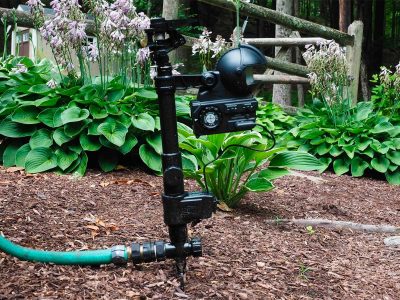


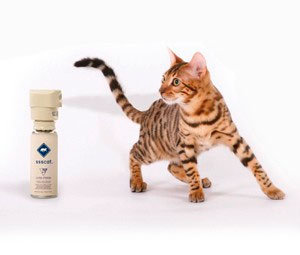


All you offered with your list are items with a 50% or less success rate and take quite a while before any permeanant results might even be noticed and items that are more of a placebo than anything. I’m not interested in how someone in the suburbs chases away their neighbours pesky cat that runs through the yard 1 or 2 times every other evening and might use their yard for a quick litter box stop on their way through the back yards… Compared to a legitimate cat problem. The rest is laughable…
I was really hoping to find a few worthwhile, fast acting, fairly immediate results, cost effective, realistic, nonlethal ideas and products that keeps my commitment, effort and finances down to a minimum and doesn’t insult anybody’s intelligence….
It was worth a try…
None the less. $20.00 will buy at least 1 gallon of antifreeze. $10.00 will buy plenty of small game hunting pellets…
In less than 1 week. My cat infestation problem will be over and filed in the history books…
Y’all don’t kow what you’re talking about, cats are great!
Cats are nothing more than domesticated rodent! I despise cats! They poop all over my lawn and piss everywhere…they are disgusting creatures. I don’t know why anyone would want one as a pet! I certainly do not want them anywhere near my house or yard!
I am not fond of cats. I have tried many things to keep these pests out of my yard and off my nice lawn. I purchased nail sticks and nailed on the fence line where they jump to get over into the yard. I also mixed vinegar, lemon juice and rosemary in a spray bottle and sprayed the lawn. I didn’t see any cat poop, but that was the first time I had done this. Will spray until I feel the cat(s) gets the idea that it cannot use my lawn for a bathroom. The only poop I pick is my little dog’s. Not a wondering stray cat that the neighbor tends to feed. I want my yard poop-free.
You all are a bunch of whiners , I just take my PELLET gun and pop’em in the head.
I live in a small country town where stray and owned cats run rampant. .
Tired of them waking me up at night! Our main problem are the neighbors that keep feeding them and crap and spray all over my property, worse yet, have 3-4 litters of kittens every summer..under my porch! I like the chicken wire idea, trying that this summer. The smell is awful!!
If u own a cat, keep it inside where it’s safe, tempted to use my bb gun at this point! Btw, animal control does nothing for strays!
I can’t stand cats…they are a worthless animal in the urban environment. I wish I could just shoot them..but I would feel guilty. I love dogs, they are mans best friend. But Felines ? Satans little helpers I tell ye!
The deterrents that emit sound to scare cats away would be great, but will it hurt my dog?
There are legal consequences. In most areas it’s against the law to have ANY pet at large in the neighborhood. This has been a source of contention in my hood for the past couple of years. Half of my neighbors now have more than one cat that they allow to wander around at all hours. I’ve even asked that they keep their cats in at night because they awaken us with their fighting and they get into our garage and spray our belongings. They have been unwilling to do that. So my husband got a feral cat trap from the police and set it up in our garage. He has removed many cats in the neighborhood. Most have been diseased and feral cats, but we have caught many neighbor’s cats as well. They aren’t too happy about having to pay an $85 fine to get their pet out of jail, but for some reason that hasn’t deterred them. I think it’s ridiculous that I should have to spend a lot of time and money keeping other’s cats off my property. I don’t think they’d like it if I allowed my three dogs to wander at will. I like cats, but I don’t like rude and inconsiderate neighbors. These are great suggestions, but judas, I have my own pets and kids to spend money on. My favorite is the motion activated sprinkler.
All throughout the article you reference the ability to find a solution without using harmful chemicals or more aggressive methods. Please list those methods. This article is incomplete without it. I’m not looking to harm the animal but I need a lasting solution that doesn’t require a hose and power. I have a piece of property that is being invaded by the feline kind and need something I can place or spray and leave alone for up to a month. Please elaborate.
Looking for more of a ‘permanent’ solution. Will rat poison work? I live in SE Michigan and the cats are a terrible problem in the summer.
Why is it cat owners are so irresponsible? If they let dogs roam like cats, there would be legal consequences.
Do you realize that by removing unwanted feral cats you will increase your problem with rats and other vermin, as well as snakes and many other pests that they keep in check? Even your annoying neighbor’s cat is helping you when he pees in your property. That smell is enough to scare away rodents and even some snakes. Rats leave when there is smell of cat.
It’s better than having disgusting cats peeing in your yard killing your beautiful lawn and leaving their piles of crap. I wish those animals didn’t exist. Careless neighbors !!
I couldn’t agree more! Not a cat lover!
That may be true. However, there are those of us who like to enjoy our backyards as an extension of our home. Stepping on poop and the horrible smell especially during the heated summer months are deplorable.It’s so much easier to catch a stray rodent every now and then. Ferral cats and dogs continue to frequent the same areas. Neighbors who have cats and dogs should be mindful to take care of them and not have them roaming to disrupt others in the community.
if you happily came over to remove piles of cat poop and flies, then they’re more than welcomed to stay.
What?
You’re not going to do that? Well, I guess they have to go.
At least there are easier ways to control rats, birds, snakes and other vermin in check. I can no longer have a BBQ or sit I in my yard because my yard smells like a cesspool. Reason, my inconsiderate neighbors feed the stray and feral cats.
Hey stupid, I spent money to have a nice landscaped yard and the damn cats from next door KILLED EVERYTHING!!! I don’t have mice, snakes or rodents. I am tired of my yard smelling like CAT PISS! And holes of cats shit everywhere. Since I can’t kill the cat, I am digging up 40-years of yard work and putting in chicken wire with bob wire. If that doesn’t stop them nothing will
Got that right!
unless they have toxoplasmosis, in which case they like the smell.
If they were peeing on your deck, windows and furniture cushions, I think you would feel different
bull feathers….the cats stalk bird feeders….they’re smarter than you….why hunt when they can wait for the food to come to them? the insects really appreciate having the birds killed and driven away, though.
I’m need something but will the sound units affect a small dog?